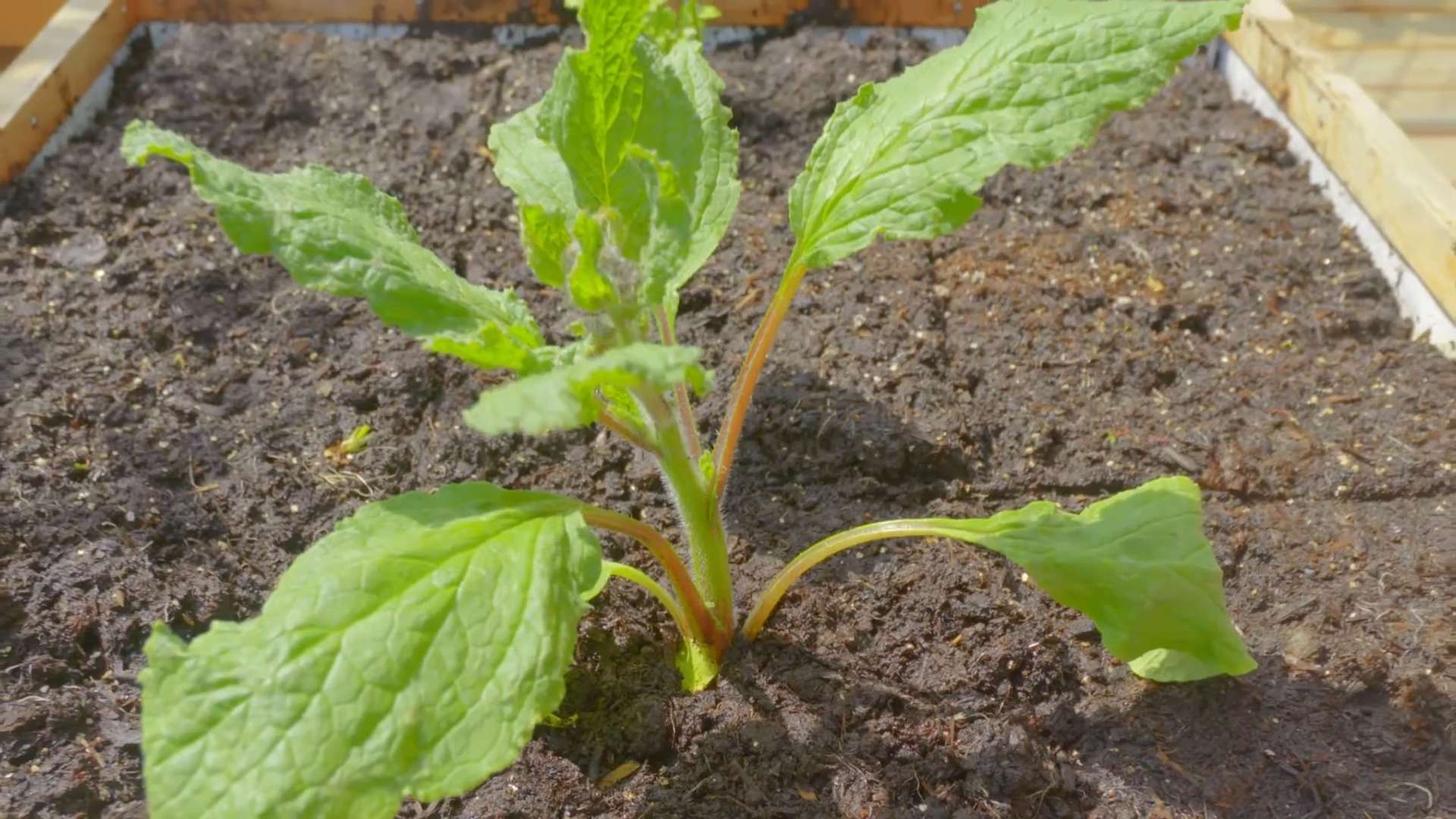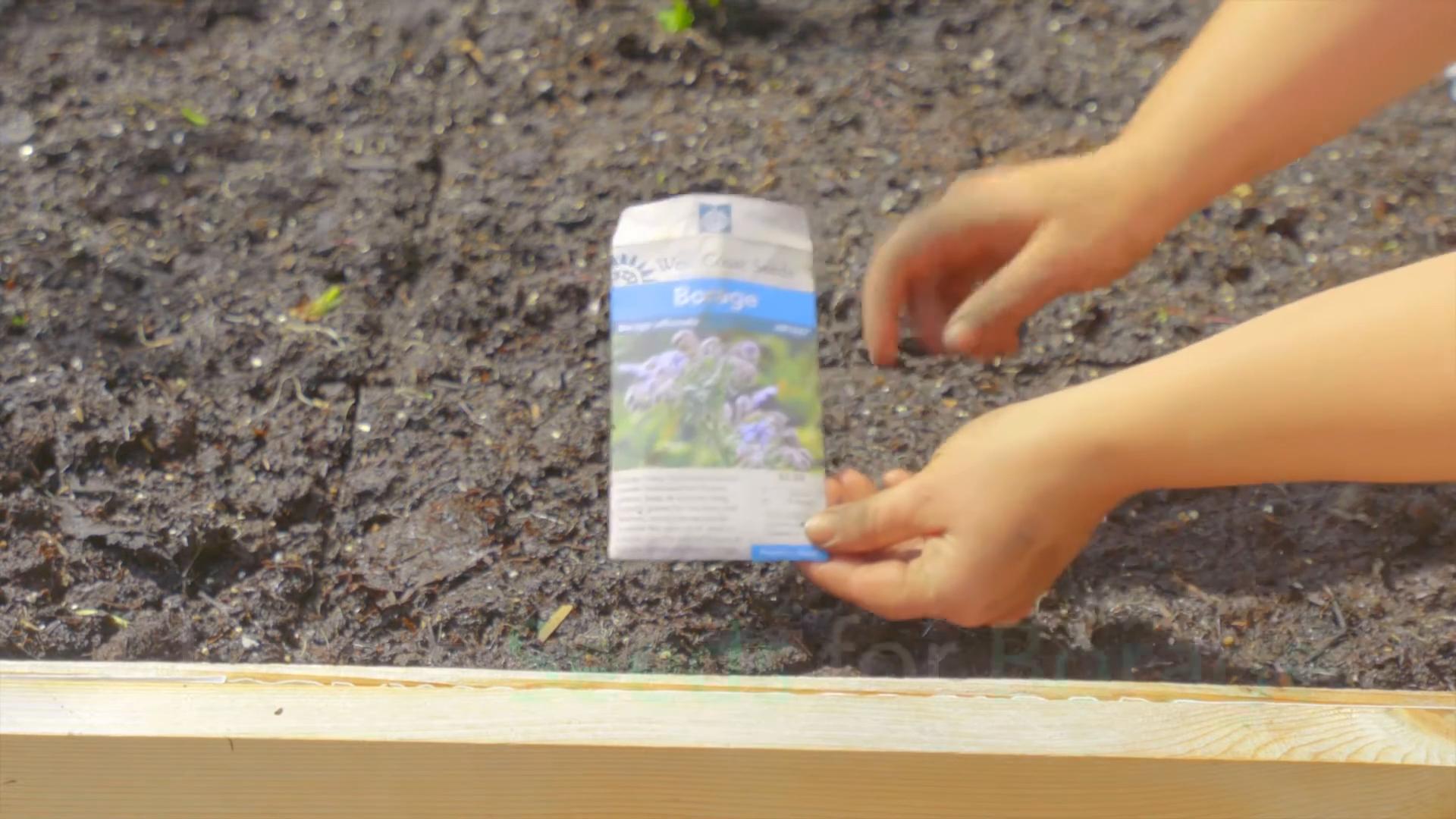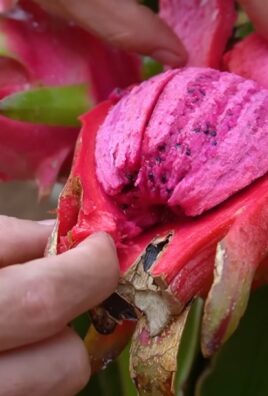Growing Borage at Home might sound intimidating, but trust me, it’s easier than you think! Have you ever dreamed of a garden bursting with vibrant blue, star-shaped flowers that not only look beautiful but also attract pollinators like bees and butterflies? Well, borage is your answer! For centuries, this humble herb has been cherished for its culinary, medicinal, and even ornamental uses. The ancient Romans believed it brought courage, while medieval herbalists used it to lift spirits.
But beyond its fascinating history, why should you consider growing borage at home? In today’s world, where we’re increasingly conscious of where our food comes from and the impact of pesticides, having fresh, homegrown herbs is a real game-changer. Borage is incredibly versatile – you can add its cucumber-like flavored leaves to salads, use the flowers as a stunning garnish, or even steep them in tea. Plus, it’s a fantastic companion plant, helping to deter pests and improve the soil for your other garden veggies. I’m excited to share some simple DIY tricks and hacks that will have you harvesting your own bountiful borage in no time, even if you’re a complete beginner!

Growing Borage at Home: A Beginner’s Guide
Hey there, fellow gardening enthusiasts! I’m so excited to share my experience with growing borage at home. This beautiful herb, also known as starflower, is not only visually appealing with its vibrant blue blooms, but it’s also incredibly useful in the garden and kitchen. Plus, it’s surprisingly easy to grow, even if you’re a complete beginner like I was!
Why Grow Borage?
Before we dive into the how-to, let’s talk about why you should consider adding borage to your garden.
* Attracts Pollinators: Borage is a magnet for bees and other beneficial insects, making it a fantastic companion plant for your vegetables and flowers.
* Improves Soil: Its deep taproot helps to break up compacted soil and bring nutrients to the surface.
* Edible Flowers and Leaves: The flowers have a mild cucumber-like flavor and can be used in salads, drinks, and desserts. The young leaves can also be eaten, but they’re a bit hairy, so I prefer the flowers.
* Natural Pest Control: Borage is said to repel certain pests, such as tomato hornworms and cabbage moths.
* Beautiful Addition to Your Garden: Let’s be honest, those bright blue flowers are just gorgeous!
Getting Started: What You’ll Need
Okay, so you’re convinced! Here’s what you’ll need to get started growing borage:
* Borage Seeds: You can find these at most garden centers or online.
* Potting Soil (if starting indoors): A good quality potting mix will provide the necessary nutrients for your seedlings.
* Small Pots or Seed Trays (if starting indoors): These will give your seedlings a good start before transplanting them outdoors.
* Garden Gloves: To protect your hands.
* Watering Can or Hose: For watering your plants.
* Garden Trowel: For transplanting seedlings.
* Well-Draining Soil: Borage prefers soil that drains well. Amend your soil with compost or other organic matter if needed.
* Sunny Location: Borage thrives in full sun, but it can tolerate some partial shade.
Starting Borage from Seed: Two Options
You have two main options for starting borage: direct sowing outdoors or starting seeds indoors. I’ve tried both, and here’s what I’ve learned:
Direct Sowing Outdoors
This is the easiest method, and it works well if you live in a climate with mild weather.
1. Choose Your Planting Time: Borage can be sown directly into the garden in early spring, after the last frost, or in late summer for a fall crop. I usually aim for early spring.
2. Prepare the Soil: Clear the area of weeds and debris. Loosen the soil with a garden fork or trowel.
3. Sow the Seeds: Sow the seeds about 1/2 inch deep and 6-12 inches apart. I like to make little rows to keep things organized.
4. Water Gently: Water the area gently to avoid washing away the seeds.
5. Keep the Soil Moist: Keep the soil consistently moist until the seeds germinate, which usually takes about 7-14 days.
6. Thin Seedlings (if necessary): Once the seedlings emerge, thin them to 12-18 inches apart to give them enough room to grow.
Starting Seeds Indoors
Starting seeds indoors gives you a head start on the growing season, especially if you live in a colder climate.
1. Choose Your Planting Time: Start seeds indoors 4-6 weeks before the last expected frost.
2. Fill Pots with Potting Soil: Fill your small pots or seed trays with a good quality potting mix.
3. Sow the Seeds: Sow 2-3 seeds per pot, about 1/2 inch deep.
4. Water Gently: Water the soil gently until it’s moist but not soggy.
5. Provide Light: Place the pots in a warm, sunny location or under grow lights. I use a simple fluorescent shop light.
6. Keep the Soil Moist: Keep the soil consistently moist until the seeds germinate.
7. Thin Seedlings (if necessary): Once the seedlings emerge, thin them to one plant per pot.
8. Harden Off Seedlings: Before transplanting your seedlings outdoors, you’ll need to “harden them off.” This means gradually exposing them to outdoor conditions over a period of 7-10 days. Start by placing them in a sheltered spot for a few hours each day, gradually increasing the amount of time they spend outdoors.
Transplanting Borage Seedlings
Once your seedlings are hardened off, it’s time to transplant them into the garden.
1. Choose a Sunny Location: Select a spot in your garden that receives at least 6 hours of sunlight per day.
2. Prepare the Soil: Clear the area of weeds and debris. Loosen the soil with a garden fork or trowel.
3. Dig Holes: Dig holes that are slightly larger than the root balls of your seedlings, spacing them 12-18 inches apart.
4. Gently Remove Seedlings from Pots: Carefully remove the seedlings from their pots, being careful not to damage the roots.
5. Place Seedlings in Holes: Place the seedlings in the holes, making sure the top of the root ball is level with the surrounding soil.
6. Fill Holes with Soil: Fill the holes with soil and gently firm the soil around the base of the plants.
7. Water Thoroughly: Water the plants thoroughly after transplanting.
Caring for Your Borage Plants
Borage is a relatively low-maintenance plant, but here are a few tips to keep it happy and healthy:
* Watering: Water your borage plants regularly, especially during dry periods. Aim to keep the soil consistently moist, but not waterlogged.
* Fertilizing: Borage doesn’t need a lot of fertilizer. In fact, too much fertilizer can actually reduce flowering. If your soil is poor, you can amend it with compost or a balanced organic fertilizer.
* Deadheading: To encourage more blooms, deadhead (remove) spent flowers regularly. This will also prevent the plant from self-seeding too aggressively.
* Pest Control: Borage is generally pest-resistant, but keep an eye out for aphids and other common garden pests. If you notice any pests, you can try spraying the plants with insecticidal soap or neem oil.
* Support: Borage plants can get quite tall and leggy, especially in windy areas. You may need to provide some support, such as staking or caging, to prevent them from flopping over.
Harvesting Borage
You can start harvesting borage flowers and leaves as soon as the plant is mature enough.
* Harvesting Flowers: Pick the flowers when they are fully open. They are best used fresh, but you can also dry them for later use. I love adding them to salads for a pop of color and flavor.
* Harvesting Leaves: Harvest the young leaves when they are tender and less hairy. Use them sparingly, as they can have a strong flavor. I’ve used them in soups and stews, but honestly, I prefer the flowers.
Potential Problems and Solutions
Even with the best care, you might encounter a few problems while growing borage. Here are some common issues and how to address them:
* Leggy Growth: If your borage plants are getting too tall and leggy, it could be due to insufficient sunlight. Try moving them to a sunnier location or providing support.
* Powdery Mildew: Powdery mildew is a fungal disease that can affect borage plants, especially in humid conditions. To prevent powdery mildew, make sure your plants have good air circulation and avoid overhead watering. If you notice powdery mildew, you can try spraying the plants with a fungicide.
* Aphids: Aphids are small, sap-sucking insects that can infest borage plants. They can be controlled with insecticidal soap or neem oil.
* Self-Seeding: Borage is a prolific self-seeder, which means it can spread quickly throughout your garden. If you don’t want it to take over, deadhead the flowers regularly to prevent seed formation.
Using Borage in the Kitchen
Now for the fun part: using your homegrown borage in the kitchen!
* Borage Flowers in Salads: Add fresh borage flowers to salads for a mild cucumber flavor and a beautiful pop of blue.
* Borage Flowers in Drinks: Freeze borage flowers in ice cubes to add a touch of elegance to your drinks. You can also infuse water or lemonade with borage flowers.

Conclusion
So, there you have it! Growing borage at home is not only achievable, but it’s also a rewarding experience that brings a touch of beauty and practicality to your garden and kitchen. We’ve walked through the simple steps, from selecting the right location and preparing the soil to nurturing your borage plants and harvesting their vibrant blue flowers and nutritious leaves.
Why is this DIY trick a must-try? Because it offers a multitude of benefits that extend far beyond just having a pretty plant. You’ll gain access to a readily available source of edible flowers and leaves, perfect for adding a unique cucumber-like flavor to salads, drinks, and other culinary creations. Borage is also a fantastic companion plant, attracting pollinators like bees and deterring pests, contributing to a healthier and more vibrant garden ecosystem. Plus, the satisfaction of growing your own food and herbs is simply unparalleled.
But the possibilities don’t stop there! Feel free to experiment with different variations to tailor your borage-growing experience to your specific needs and preferences. Consider planting borage near your tomatoes, strawberries, or squash to take advantage of its companion planting benefits. You can also try growing borage in containers if you have limited garden space, ensuring you choose a pot that’s large enough to accommodate its mature size. For a splash of color, explore different borage varieties, such as the white-flowered Alba borage.
And don’t forget the culinary applications! Beyond salads and drinks, borage flowers can be candied for a sweet treat, used to decorate cakes and desserts, or even infused into oils and vinegars for a unique flavor profile. The leaves can be lightly steamed or sautéed as a vegetable side dish, or added to soups and stews for a subtle herbal note.
Ultimately, growing borage at home is an investment in your well-being, your garden’s health, and your culinary creativity. It’s a simple yet powerful way to connect with nature, enhance your meals, and add a touch of beauty to your surroundings.
We wholeheartedly encourage you to give this DIY trick a try. Start small, experiment with different techniques, and don’t be afraid to get your hands dirty. The rewards are well worth the effort.
And most importantly, we want to hear about your experiences! Share your borage-growing journey with us in the comments below. Tell us about your successes, your challenges, and your favorite ways to use borage in your kitchen. Your insights and experiences will not only inspire others but also help us all learn and grow together as a community of gardeners and food enthusiasts. Let’s cultivate a thriving community around the joy of growing borage at home!
Frequently Asked Questions (FAQ)
What are the best conditions for growing borage?
Borage thrives in full sun to partial shade and well-drained soil. While it’s relatively adaptable, it prefers a sunny location for optimal flowering and growth. The soil should be moderately fertile and slightly acidic to neutral (pH 6.0-7.0). Borage is also relatively drought-tolerant once established, but regular watering during dry periods will promote healthier growth and more abundant flowering.
How often should I water my borage plants?
Water borage plants regularly, especially during dry spells. Aim to keep the soil consistently moist but not waterlogged. Overwatering can lead to root rot, so ensure the soil has good drainage. A good rule of thumb is to water deeply when the top inch of soil feels dry to the touch. Mulching around the plants can help retain moisture and suppress weeds.
When is the best time to plant borage?
The best time to plant borage is in the spring after the last frost or in the early fall in milder climates. Spring planting allows the plants to establish themselves before the heat of summer, while fall planting provides a head start for the following spring. You can also start borage seeds indoors 4-6 weeks before the last frost and transplant them outdoors once the weather warms up.
How do I harvest borage flowers and leaves?
Harvest borage flowers when they are fully open and vibrant blue. Gently pluck them from the stem, being careful not to damage the plant. The leaves can be harvested at any time, but they are most tender and flavorful when young. Use scissors or pruning shears to cut the leaves from the base of the plant. Regular harvesting will encourage more flowering and leaf production.
Is borage invasive?
Borage can self-seed readily, so it can become somewhat invasive in some gardens. To prevent unwanted spread, deadhead the flowers before they go to seed. You can also collect the seeds and sow them in desired locations. If you’re concerned about invasiveness, consider growing borage in containers to control its spread.
What are the common pests and diseases that affect borage?
Borage is generally pest and disease-resistant, but it can occasionally be affected by aphids, spider mites, or powdery mildew. Aphids and spider mites can be controlled with insecticidal soap or neem oil. Powdery mildew can be prevented by ensuring good air circulation around the plants and avoiding overhead watering.
Can I eat borage flowers and leaves?
Yes, both borage flowers and leaves are edible. The flowers have a mild, cucumber-like flavor and can be used in salads, drinks, and as a garnish. The leaves also have a cucumber-like flavor but can be slightly hairy, so it’s best to use young leaves. They can be added to salads, soups, stews, or lightly steamed as a vegetable.
Are there any health benefits to eating borage?
Borage is a good source of gamma-linolenic acid (GLA), an omega-6 fatty acid that has anti-inflammatory properties. It also contains vitamins and minerals, such as vitamin C, calcium, and potassium. Borage has been traditionally used to treat various ailments, but more research is needed to confirm its health benefits.
Can I grow borage in containers?
Yes, borage can be grown successfully in containers. Choose a pot that is at least 12 inches in diameter to accommodate the plant’s mature size. Use a well-draining potting mix and water regularly. Place the container in a sunny location and fertilize every few weeks with a balanced fertilizer.
How can I use borage as a companion plant?
Borage is an excellent companion plant for tomatoes, strawberries, and squash. It attracts pollinators, such as bees, which can improve fruit set. It also deters pests, such as tomato hornworms and cabbage moths. Plant borage near these crops to create a healthier and more productive garden.




Leave a Comment